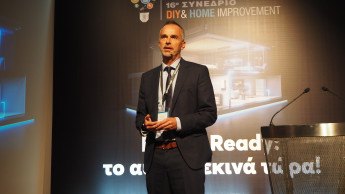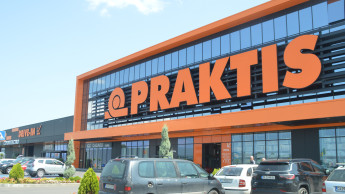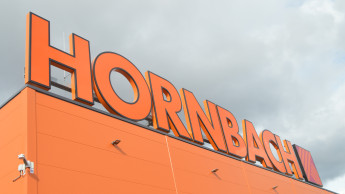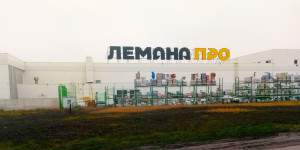Summary of the Presentation given by Dr. Alan Barton, Vice President of The Rohm und Haas Company, at the 4th International DIY Congress in Berlin on 16 April, 2002
The Rohm und Haas Company, founder of the Paint Quality Institute, is a leading global supplier of raw ingredients to the paint industry. It is active in 120 countries across the world, has a workforce of 17.000 and a turnover of 6 Billion US dollars. Its German headquarters are located in Frankfurt am Main.
Rohm and Haas founded the Paint Quality Institute (in short: PQI) in 1989 in Philadelphia, USA. Its aim was to communicate the benefits of high quality, environmentally superior paints to DIYers, manufacturers and retailers alike. PQI expanded globally in 2000 and is currently active in Germany, France and the UK as well as China, Australia, New Zealand and Brasil.
The Institute's expertise is largely based on an extensive programme of long-term empirical testing of paint, as well as innovative R&D activities. There are 12 paint testing sites worldwide, where over 30.000 paint panels and over 100.000 different types of paint are exposed to differing climates.
The knowledge gathered from this work is collated and made available to DIYers, retailers and paint manufacturers using a variety of communication media. The core PQI activities encompass a continual dissemination of educational material on paint via all publically available media channels, its own information-based online paint portals (www.paintquality.co.uk , www.farbqualitaet.de, www.qualitepeinture.com) as well as training modules targetted to retail sales staff. The PQI programme also involves extensive and on-going market research studies of the DIY paint consumer, as well as offering trend advice on colours and decorational styles, and tips and tricks on the increasingly popular area of decorative paint effects.
The programme's success in the USA was remarkable. During the 1990s, the segment of high quality paint grew twice as fast as the total paint market. The advantages offered by paint quality were communicated clearly, the benefits understood, resulting in the acceptance of genuine added value.--nextpage--
Challenges Facing the Paint Industry Today
Rohm und Haas and PQI identify two key areas of opportunity to ensure a healthy future for the paint industry - productivity and marketing.
In the area of productivity, Rohm and Haas sees potential in innovation management and the way new products are developed. It sees efficiency gaps in these key areas that need addressing. Specifically, it maintains that all players in the value chain would profit by a closer, more integrated and co-ordinated approach. Streamlining key functions would result in marked improvements in productivity. Less well-selling product lines would be removed faster from the shelves, to be replaced with new products with better sales potential.
In terms of marketing, the Paint Quality Institute focuses on the area of "consumer insights". It believes the way forward is by listening closely and responding carefully to what the DIY paint consumer wants. To this end, it commissioned a representative study of paint consumer habits and attitudes amongst over 900 DIYers in Germany, France and UK, the key results of which it believes are of great value to the paint industry.
92% of all German DIY painters stress how important it is for them to buy a high quality paint when they are giving their home a make-over. 87% agree that it is worth paying more for a particularly high quality paint. But only 48% said that they were totally satisfied with the performance of the paint they had used the last time they decorated!
PQI refers to GfK market data to underline the need for all involved in the manufacturing and selling of paint to take action. The growth rates in DIY paint are analysed from 1996 - 1999, split according to DIN paints - paints fulfillling the industry quality standard - and non-DIN paints, which are of inferior quality. The results of the analysis are alarming - whilst the non-DIN paints enjoyed strong and consistent growth from 1996 - 1999, DIN paints hardly grew at all between 1996 - 1998, and in 1999 their share actually shrank.
All paths to profitable growth, according to the Institute, must involve tackling this problem head on , leading to the reversal of an extremely unhealthy development.
How should quality be communicated, in what channels? The role of the sales staff is key, according to PQI - particularly in Germany. When German DIY painters want information on paint, they turn first and foremost to retailers' sales staff. Do they always get the answers they are looking for? Whilst the overall picture in terms of satisfaction with advice given was positive, there is clear room for improvement. 78% of German DIYers claimed they would like better advice from the sales staff in question.
Quality opportunities are also identified in the shaping of paint ranges according to DIY quality requirements. Consumers agree that a paint in the kitchen and the bathroom, for example, needs to be of particularly high quality.
The Future
PQI sees innovation as key to the paint market growing profitably in future. Three areas are identified as requiring even more attention from general management:
The development of more innovative products
Investing in innovative communication campaigns that create a fascination for colour and paint.
Innovation at the point of sale - encompassing both excellent advice from sales staff and a high quality in-store shopping environment.
Last but not least, the role of the internet is highlighted as key in stimulating purchase and thereby sales. The continuing strong growth in the use of brand-neutral, educationally focussed online portals, such as www. farbqualitaet. de, www. paintquality.co.uk or www.qualitepeinture.com shows clearly how interested consumers are in using this new channel to learn all about paint and painting.
Finally, PQI sees the future driven by quality management that puts an enjoyable, high-quality "experience of paint" centre-stage. Something that everyone involved in the business of paint would profit from.
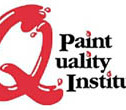

 Menü
Menü








